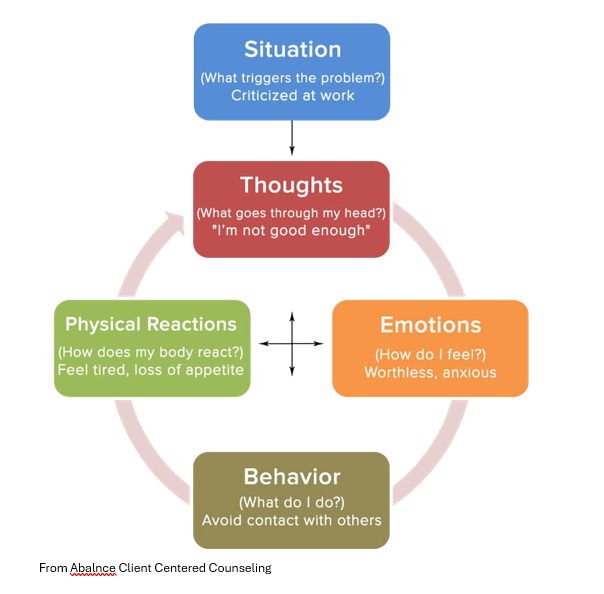Cognitive Behavioral Therapy
Cognitive Behavioral Therapy (CBT) is a widely used, evidence-based form of psychotherapy that helps individuals identify and change unhelpful patterns of thinking and behavior. It’s grounded in the idea that our thoughts, feelings, and actions are interconnected—so by shifting negative thought patterns, we can influence our emotions and behaviors in a positive way. CBT is typically structured and goal-oriented. During therapy, individuals learn practical strategies to challenge distorted thinking, manage stress, and develop healthier coping mechanisms. Techniques might include journaling, role-playing, relaxation exercises, and homework assignments to reinforce skills between sessions.
This approach has proven effective for a wide range of issues, including depression, anxiety, PTSD, eating disorders, and substance use problems. One of CBT’s strengths is its focus on empowering people to become their own therapists—building resilience and self-awareness that lasts well beyond the therapy room.


